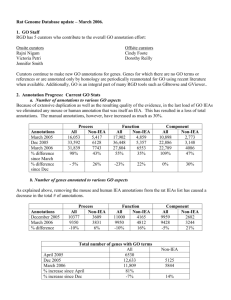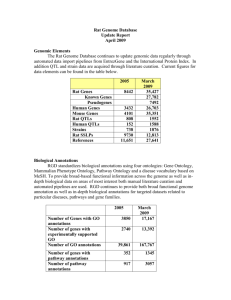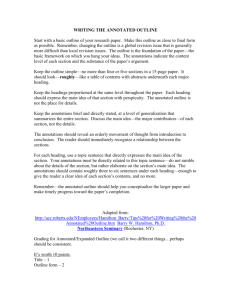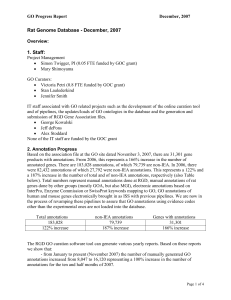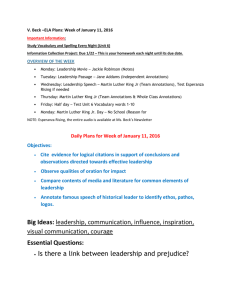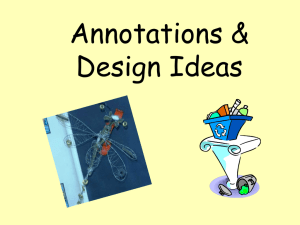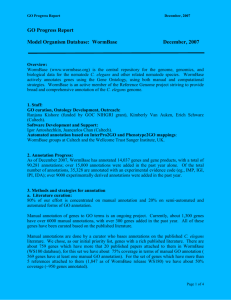Rat Genome Database - Gene Ontology Consortium
advertisement
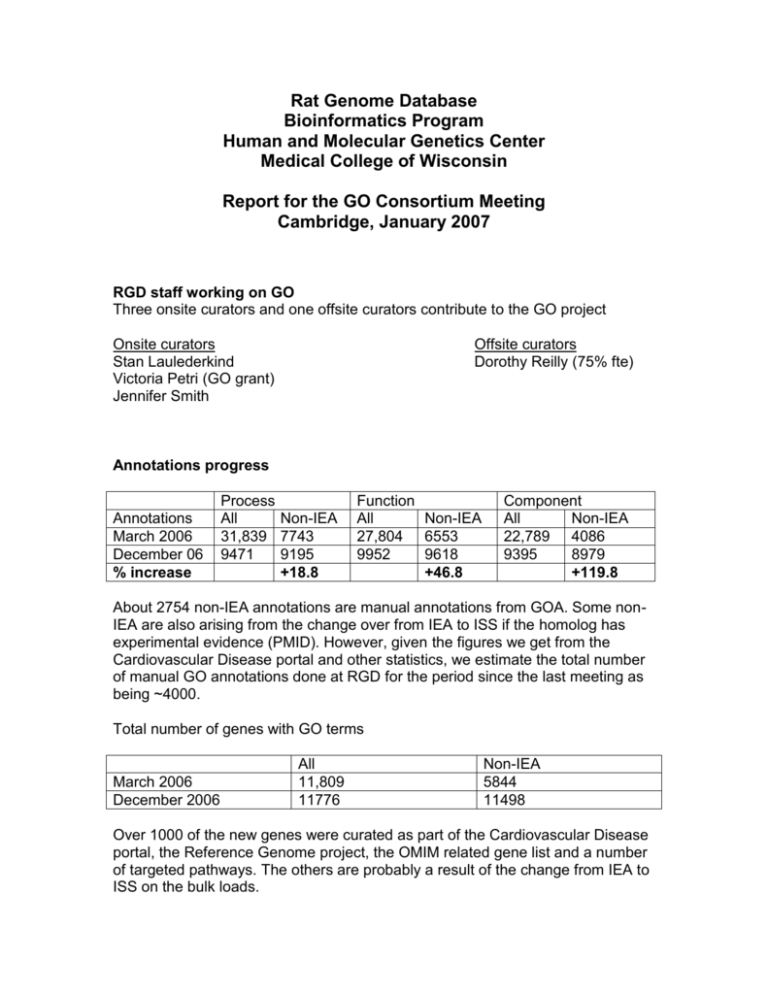
Rat Genome Database Bioinformatics Program Human and Molecular Genetics Center Medical College of Wisconsin Report for the GO Consortium Meeting Cambridge, January 2007 RGD staff working on GO Three onsite curators and one offsite curators contribute to the GO project Onsite curators Stan Laulederkind Victoria Petri (GO grant) Jennifer Smith Offsite curators Dorothy Reilly (75% fte) Annotations progress Annotations March 2006 December 06 % increase Process All Non-IEA 31,839 7743 9471 9195 +18.8 Function All Non-IEA 27,804 6553 9952 9618 +46.8 Component All Non-IEA 22,789 4086 9395 8979 +119.8 About 2754 non-IEA annotations are manual annotations from GOA. Some nonIEA are also arising from the change over from IEA to ISS if the homolog has experimental evidence (PMID). However, given the figures we get from the Cardiovascular Disease portal and other statistics, we estimate the total number of manual GO annotations done at RGD for the period since the last meeting as being ~4000. Total number of genes with GO terms March 2006 December 2006 All 11,809 11776 Non-IEA 5844 11498 Over 1000 of the new genes were curated as part of the Cardiovascular Disease portal, the Reference Genome project, the OMIM related gene list and a number of targeted pathways. The others are probably a result of the change from IEA to ISS on the bulk loads. Many of the estimated 1000 plus genes have received manual curation for the first time. Methods and strategies for annotations 1). Literature curation. We are using the Entrez PubMed link as well as PubMed searches to identify the literature that may be associated with a particular rat gene. We are using the full paper and always assure that the gene used in the experiments was actually a rat gene. Even if the rat gene has GO annotations the literature is still searched so that as of the date of annotations being dome we can consider the gene ‘fully’ curated’. In most cases, we confine annotations to terms for which experimental evidence codes can be used. In other words, the annotations rules established for the Reference Genome project have been extended to how GO annotations are being done in general. 2). Computational annotation strategy. GO annotations are being brought in electronically based on the human/mouse homology of rat genes if the human/mouse genes have experimental evidence codes at MGI/GOA. 3). Priorities for annotations a). Genes from the Reference Genome list b). OMIM genes from Mary Dolan’s paper (currently being done) c). Diseases related genes i. Obesity/metabolic syndrome portal ii. Genes in pathways related to portals iii. Gene families as part of nomenclature collaboration d). Mitochondrial genes (from a paper whose results have been submitted to GOC). Other Highlights The greatest impact on the way RGD is doing curation/ontology annotation in general and GO in particular has come from the implementation of new pipelines and curation tool as part of the broader project of revamping RGD database. Using the new Ontology term and GOC Ontology export pipelines, we bring in the GO trees every day ( as opposed once every couple of weeks when new annotations were loaded), the Gene Association file is generated by automatically extracting the data from the database ( as opposed to going through many scripts to eventually generate a text file with the right format from a large Excel spreadsheet), a verification script is automatically ran on the generated file, there is an automatic CVS check-in and the curation staff is automatically notified of any errors, if any, in the file. The online curation tool has greatly facilitated the curation/annotation process and as a consequence the number of GO annotations done on a regular basis has profoundly increased. The tool is presented in more detail in the RGD poster for the GO Consortium meeting.
